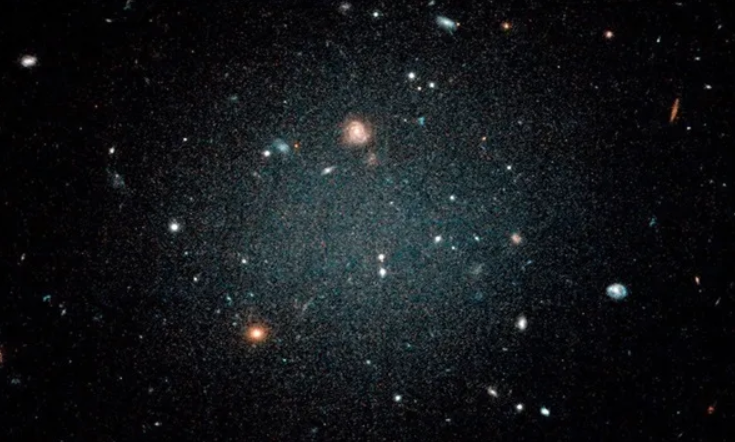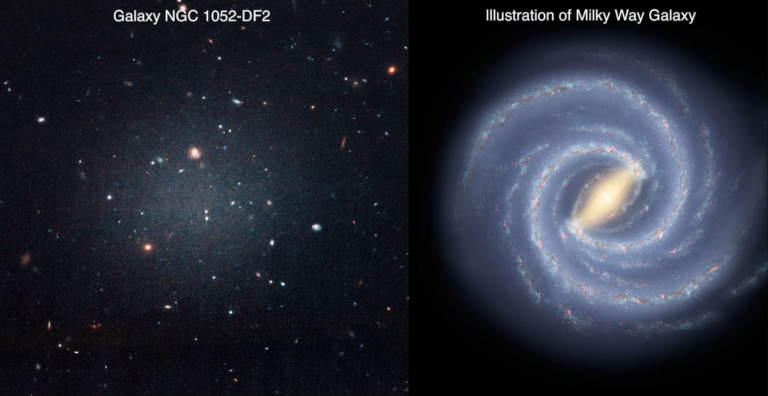Astronomers are being forced to reconsider how galaxies form due to the discovery of 19 additional galaxies lacking dark matter
Researchers have spotted 19 additional galaxies that are not containing any dark matter within them. Such galaxies are the majority of galaxies that contain the regular matter therein which is the very fundamental building blocks of everything we know. Indeed, they are not based on the dark matter.
Confirmation of the two formerly dark matter-free galaxies by the current study is in line with the published information about these deviations in the exact words, Nature Astronomy. Galaxies can be considered to be the main products of the organised expansion of the universe, which is remarkably dependent on this greatly dominant component of the dark matter. The presence of many galaxies in which something so weird as dark matter presents implies that vulgar astronomers might be mistaken about about what goes into the explicable growth and evolution of galaxies.
“Qi Guo, Chinese Academy of Scies’s lead author, declared to press world that it is the matter that contradict the conventional galaxy formation model and needs to be reviewed”, says the press release.
Dark matter and galaxy rotation
In the course of the following years, astronomers accepted that there was a “dark matter”, a substance that interacts solely with gravity with matter and light. There is such a substance in all types of galaxies. Contrastingly, in 2018, one of the researchers who was leading the Cape Hill Observatory, Pieter van Dokkum from Yale University discovered an astonishing galaxy named NGC 1052-DF2. Where other galaxies would have thousands of times greater amounts of dark matter, this galaxy seemed to have no dark matter.
Van Dokkum stated in his statement following the discovery, “We had an impression that there was a specific kind of dark matter, which was a fundamental component of every spiral galaxy and which played a unique role in galaxy creation.” This phenomenon is invisible and unknown, and yet it exercises power over all galaxies. Dark matter is not present in some galaxies and this gaps in information demonstrate that it is not new altogether but has an individual role in the dynamics of the galaxies.
By the time, van Dokkum and colleagues found the absence of an appreciable amount of dark matter from a galaxy named NGC 1052-DF4. Just as NGC 1052-DF2 is the one that exists now, the ultra-diffuse galaxy began the intense debates among astronomers.
Ignacio Trujillo, an astronomer at the Instituto de Astrofisica de Canarias in Spain, was one of the doubters. However, the debate was much broader than this breakthrough.
Trujillo said that he had one of the most striking revelations for him ‘cause the globular did not only look without dark but also at the same time it seemed with much brighter clusters of stars.’ “I recall thinking: It reads “’Squaring the circle — simultaneously finding things that are perfect squares and do not equal the radius of circles — is quite strange.”
Although a back and forth scholarly dialogue between Van Dokkum and Trujillo on the dark matter issue is had both ways, the exact state of the galaxies still remains that whether they actually do lack dark matter remains in the dark.

A growing list of galaxies without dark matter
Still, another novel finding that recognizes kind of dark matter a dwarf galaxy DF2 and DF4 possess reduces the strangeness factor. Notably, astronomers will in due course need to take a close look at the repercussions of this impact on the increasing population of small galaxies showing no evidence of dark matter, which may turn out to be the case.
Guo and his colleagues employed data from Arecibo Observatory, Puerto Rico and SDSS (Sloan Digital Sky Survey) to explore the intrinsic nature of 324 dwarf galaxies. Surprisingly, new, smaller galaxies appeared to be devoid of dark matter. They observed the rotational speed of a hydrogen gas, taking the lead from both Mrs. Humason and Mr. Rubin and Mrs. Ford, using that data. The scientists were doing the energy calculation, as well, the number of normal matter which contains both the stars and the gas.
And after crunching some of them numbers, the trio discovered that out of the 324 transit dwarf galaxies, 19 of them have sufficient baryonic matter to explain hydrogen moves solely. Characterized differently, these galaxies are deficient in dark matter in considerable amounts.
As reported in the study, “our findings demonstrate that a sizeable population of dwarf galaxies could be created by a very specific process which requires much smaller amount of dark matter than seen in the dwarf galaxies of our group [i.e. the Local Group] and other simulations.”
There exists a slight indication that dark matter can be observed in galaxies beyond our own. Dokkum reasoning that it would suggest our ideas about how starlight galaxies form is wrong. At the moment it was believed that galaxies begin to form only when gas and dust are gathered into galaxy, which gravitational pull is making as massive loads of dark matter.
“This is the central conundrum, namely how star formation would kick off when the existence of dark matter is not taken into account?” van Dokkum added. “It was only their later history that allowed us to say that the galaxies had been very dense,” and in their earlier times, they could not have generated any new stars.
Guo and his co-authors suggest looking for more research on the impact of hydrogen gas speed on the shape of the galaxies in the next years. And after this, they aim to unravel some of the main assumptions at the heart of the processes which result in these dark matter-absent galaxies.
Do not forget to share your opinion with us to provide you with the best posts !




0 Comments